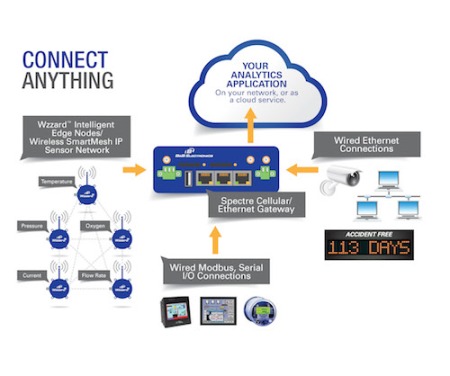Following the devastating storms (for Ireland) and the destruction caused to infrastructure and property near the coastline we have had time to consider talking about something we suddenly found ourselves without!
Don’t get the wrong impression. The great winds that swept over the country over the Christmas and New Year period although they caused damage mercifully the did not, in so far as we know cause any loss of life. The pictures of surging surf and uprooted or swept away roads and pathways, particularly in our own area of South Conamara and further west were a grimn reminder of the untamability of Mother Nature. Michael Viney’s excellent weekly column in the Irish Times recently gives a flavour as he writes about “The nuts and volts of thunder storms!”
 Here in the Read-out office we were not left unscathed and a very loud thunder clap – obviously preceeded by a lightening strike – put paid to the interior of our working computer. It also appears to have put paid to our connections with the outside world and we were without our land-line and our usual internet connection for ten days. Mercifully no information had been lost but there is little that we could do with that information in the modern world without a reliable and speedy internet connection.
Here in the Read-out office we were not left unscathed and a very loud thunder clap – obviously preceeded by a lightening strike – put paid to the interior of our working computer. It also appears to have put paid to our connections with the outside world and we were without our land-line and our usual internet connection for ten days. Mercifully no information had been lost but there is little that we could do with that information in the modern world without a reliable and speedy internet connection.
First steps
We have been connected in one way or another to the internet for twenty years. It was in 1994 that we became the 700 customer on Ireland-on-line (the iol.ie in our e-mail address). It was a dial-up service – remember dial-up? At the time of joining up there were three subscribers to our print publication, Read-out, who had e-mail addresses. Hard to imagine!
 The following year we started the Read-out Instrumentation Signpost which basically was a collection of links to the then few automation sites available. Gradually as more resources became available we assembled a website of links and briefly an Instrumentation Directory, which over the years has grown less important as the search-engines have become more sophisticated. All the developments we talk about here would have been impossible had not the net been freely available at little or no cost. The big player and the one man band have equal access to the basic platform.
The following year we started the Read-out Instrumentation Signpost which basically was a collection of links to the then few automation sites available. Gradually as more resources became available we assembled a website of links and briefly an Instrumentation Directory, which over the years has grown less important as the search-engines have become more sophisticated. All the developments we talk about here would have been impossible had not the net been freely available at little or no cost. The big player and the one man band have equal access to the basic platform.
Is the party over?
One of the great things about the internet – up to now – is its neutrality and its accessibility. It has been a great leveller. Anybody can join. Karlin Lillington, a correspondent with the Irish times states, “Net neutrality has long been a major concern for technology companies and service providers large and small. The loss of such a policy will be viewed with alarm in a world where internet access grows to be seen more and more like a utility in the public eye, and underlies the business plans of small entrepreneurial companies up to the largest entertainment moguls.” Karlin Lillington notes the decision by a US Federal court which could overturn this neutrality and signal the exclusionb of the “small guy!” It appears that even in the European Union the legislation proposed has loopholes the exploitation of which could have very similar implications. (Rulings in the us could make the web a dangerously different place.)
Blogs
Where the web-site presence has flourished is in the provision of product, people, application and company news, editorial and comment. At first we linked to stories we found in various places on the web. As things progressed we realised that we received many press releases from vendors and technical innovators which we were unable to include in the limits of a 12 to 16 page periodical and thus we progressed to publishing them on our blogs. Mostly these are included on the blogger platform where they are lightly edited. More technology based and opinion pieces are put on the WordPress platform (You’re reading this post on it!) To date we have put up well over 5000 stories and articles.
As the internet grew and developed so to did the business of business, change, and change radically. One of the little books that we found useful was by Seth Godin, called “Meatball Sundae”, mostly because this new thing is turning everything upside down and putting seemingly incompatible principles and ideas together and coming out with something that turns out to be brilliant. We wrote about it in one of our first blogs!
Social media
However for engineers a lot of this is in a way counterintuitive and contrary. Engineers like to know how things work and to be able to predict outcomes. The left brain skills (engineers & scientists) versus the right brain skills (artistic and creative) is in full play here. For those a useful volume is Di Pietro’s ‘Social Media for Engineers and Scientists,‘ which we recommend highly.
 We first got on-line in the early nineties to access information on the International Society of Automation website, which had and has lots and lots of useful information on the discipline available free of charge to members. This was available not through a browser as now know it but through a platform called Telnet. There were no pictures just simple text. The connection was a dial-up one, it was incredibly slow but very exciting. Here we were in Ireland looking at material live in North Carolina USA.
We first got on-line in the early nineties to access information on the International Society of Automation website, which had and has lots and lots of useful information on the discipline available free of charge to members. This was available not through a browser as now know it but through a platform called Telnet. There were no pictures just simple text. The connection was a dial-up one, it was incredibly slow but very exciting. Here we were in Ireland looking at material live in North Carolina USA.
Our methods of communication were through “list-serves” where one joined a group and emails were sent to a group address and distributed to those on the list. There were also on-line communities where messages were left and looked at and responded to by members at there leisure.
However as the world wide web enveloped the internet the telnet platform faded and a new platform called a browser made its appearence. Names like Netscape and Mozilla became common parlance and it wasn’t long before the giant Microsoft Corporation introduced the daddy of them all Explorer. But things wax an wane and now while we still have Explorer but also Firefox, Chrome and Apples Safari and of course dial-up is never mentioned in polite society. It is broadband, speed and “always-on” internet that is the norm now.
 We posted an item in early 2013 with videos from the aforementioned Jon DiPietro, and Emerson’s internet guru Jim Cahill which is relevent to this topic: Two social media pioneers in Automation ask “Why?” and “How!”
We posted an item in early 2013 with videos from the aforementioned Jon DiPietro, and Emerson’s internet guru Jim Cahill which is relevent to this topic: Two social media pioneers in Automation ask “Why?” and “How!”
Facebook
It is hard to imagine life without the internet now. The advent of social media has changed things yet again. First facebook came along and people started to share their lives with the world. It quickly developed into an incredible mismatch of things, what people had for breakfast, things that amused them, the pet gripes, politics, religion, pictures of their pets, holiday experiences. What it has turned out to be is a vehicle for communication between people who will in fact prabably never meet or with relations they would otherwise have lost conntact with.
But from a business point of view it could also be useful. We quickly found the our personal page was fairly useless, as there was so much noise from people not concerned with the latest automation widget and/or with personal stuff. Few automation engineers really want to know if your child became champion cheerleader in the school or what you had your favourite eating house! Happily Facebook had an answer to that in what they used to call “fan pages”, these pages are dedicated to particular topics, hobbies etc to which interested people may indicate an interest by “liking” them. Thus the Read-out Facebook page has some people who follow the writer’s personal page but many more who do not! Our automation blog stories are automatically posted to this facebook page.
Twitter
This can be an invaluable tool. We use it (@ReadoutSignpost) to publicise stories as they are published. We also post other material (mostly in Irish) that interests the writer. We decided early on that it would be impractical to open two twitter accounts one for business and one for everything else. The messages are basically enforcedly short (max 140 characters including URL) and so they can be easily dismissed if not of interest.
 Twitter however is also useful because with the advent of intelligent phones tweets often relay breaking news far more quickly, though not always with accuracy, than more conventional methods of media communication. One example on our discipline is how this writer learned of the arrival of Stuxnet, the first malware discovered that target automation systems. Gary Mintchell, then of Automation World, tweeted brief details in July 2010. Had he not done so we would not have been alerted to this very important story and read and shared (with many others) the first reports and studies of the implications of this important event. We have assembled a large collection of links to pages, reports, papers and videos on our popular ICS & SCADA Security page.
Twitter however is also useful because with the advent of intelligent phones tweets often relay breaking news far more quickly, though not always with accuracy, than more conventional methods of media communication. One example on our discipline is how this writer learned of the arrival of Stuxnet, the first malware discovered that target automation systems. Gary Mintchell, then of Automation World, tweeted brief details in July 2010. Had he not done so we would not have been alerted to this very important story and read and shared (with many others) the first reports and studies of the implications of this important event. We have assembled a large collection of links to pages, reports, papers and videos on our popular ICS & SCADA Security page.
One important thing to remember about twitter (and social media in general) is what Euan Semple says “Organizations Don’t Tweet, People Do!“ Indeed if you are ambivalent about the use of social media his book of the same title could be invaluable.
Many times the one man band is far more effective that the large corporation and I think the reason for this is because he/she IS people. The most successful participants, it seems to me, are those who regularly participate with interesting material and telling a story. Few large corporations trust their employees enough to allow this freedom which is the essence of social media.
Another important thing about twitter is that it is said to have a half-life of 4 hours, unlike facebook which goes on forever. No matter what platform one posts on, one must always beware what one posts as who knows it may come back to haunt you!
LinkedIn
LinkedIn is something we have come to late in the day. It was called the “Business version of facebook!” but in reality this writer could not get it. Fine if you were looking for a job etc. Because of its reputation we did “join” it early on and many people became “contacts.” But recently we started our own group, the Read-out Signpost News, and this is another vehicle for us to spread the Read-out news pages. We haven’t been there long enough to gauge reaction but we have garnered some further contacts in many different corners of ther globe.
There are some useful discussion groups on topics, like Cybersecurity, there which to a large extent mirror the old list-serves as they enable daily, or weekly reports of the items that have been shared be posted to your email address. In a way a periodic newsletter! Quite useful.
Google Plus
I am like many people on the internet. I don’y know what Google+ is about. Chris Rand in his Bmon newsletter summed it up nicely recently “My guess is that whatever social networks you use personally, and whatever you’ve introduced into your company’s marketing, Google+ is not going to be amongst them, except as a token gesture at best.” Read his short daily one day last November, “I admit it. I still don’t know what Google+ is all about.” and you’ll understand what I mean.
There are other platforms like YouTube which as yet we have not ventured into but a lot of companies, including automation enterprises, are becoming involved with varying degrees on success. The important this is regular posting of interesting material.
So what do we think?
Without a doubt the internet has changed our lives. When the first commercial Read-out hit the Irish highways and byways we little thought that we would become so well known in the world-wide automation and control community. We have regular visits to our site from places as far afield as Norway, (indeed more people visit our site from Norway than almost any others country except the USA), India, China and the Ukraine, Germany, the USA, Britain and France as well as Ireland.
We learn of news, mergers, important technological events and achievements at a speed inconcieveable in 1989. We share that information with the whole world through the various platforms on the web. We engage with our automation friends and acquantances all over the globe in previously impossible ways.
And sometimes we get to meet them at exhibitions and conferences and have no need for the preliminaries of getting to know people because if we realise that “Organizations Don’t Tweet, People Do!” then we do know them already!
What a wonder!
 First past the post!
First past the post!











 Posted by Eoin Ó Riain
Posted by Eoin Ó Riain 

 This impacts manufacturing and automation system companies in quite a few different ways. The membership of Great Britain and Ireland in the EU made it possible to conduct business across country barriers with so much ease that the borders were essentially invisible. Personnel could be sent wherever needed, not where they were citizens. Inventory could be stored anywhere in the EU for shipment anywhere in the EU and things like FAT tests and FEED projects could be done anywhere without regard for borders.
This impacts manufacturing and automation system companies in quite a few different ways. The membership of Great Britain and Ireland in the EU made it possible to conduct business across country barriers with so much ease that the borders were essentially invisible. Personnel could be sent wherever needed, not where they were citizens. Inventory could be stored anywhere in the EU for shipment anywhere in the EU and things like FAT tests and FEED projects could be done anywhere without regard for borders.





 The following year we started the
The following year we started the 





